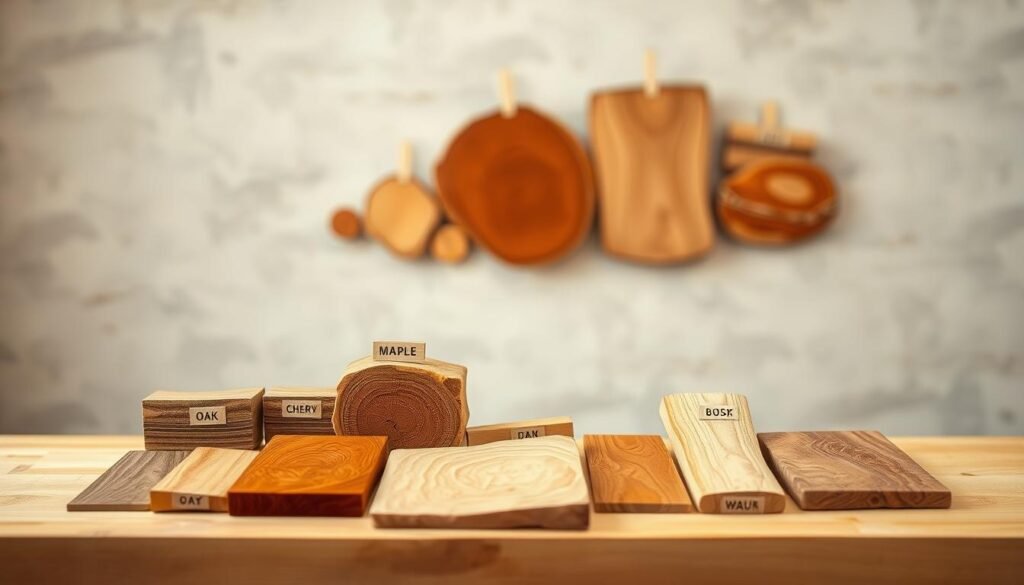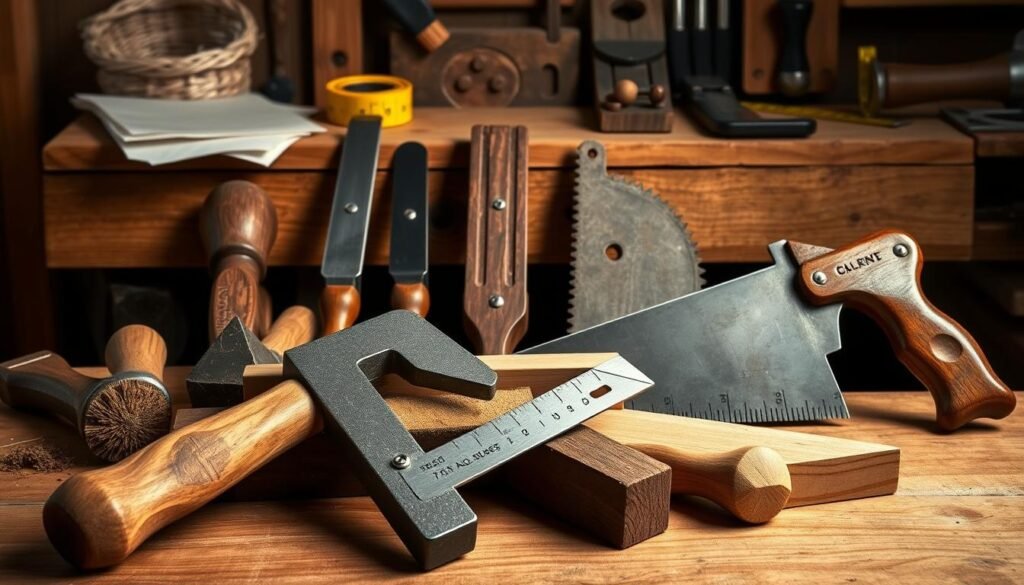Creating beautiful wood projects needs more than just skill. It also requires the right materials, like the finish. A good finish makes your woodwork last longer and look better, keeping it safe from damage.
Choosing the right finish is key to making your projects last. Whether it’s furniture, flooring, or decorations, the finish is essential. It keeps the wood looking great and strong.
In this guide, we’ll look at the top durable wood finishes and sealants. We aim to help you choose the best for your next project.
The Science Behind Long-Lasting Wood Finishes
To get a wood finish that lasts, you need to know the basics. The type of wood is key to how long the finish will last.
Hardwoods vs. Softwoods Considerations
Hardwoods like oak and maple are denser than softwoods like pine and fir. This density changes how well the wood takes finishes. Hardwoods need more careful application.
Grain Structure and Absorption Rates
The wood’s grain affects how it absorbs finishes. Woods with open grains, like oak, take more finish. This can make the finish more durable.
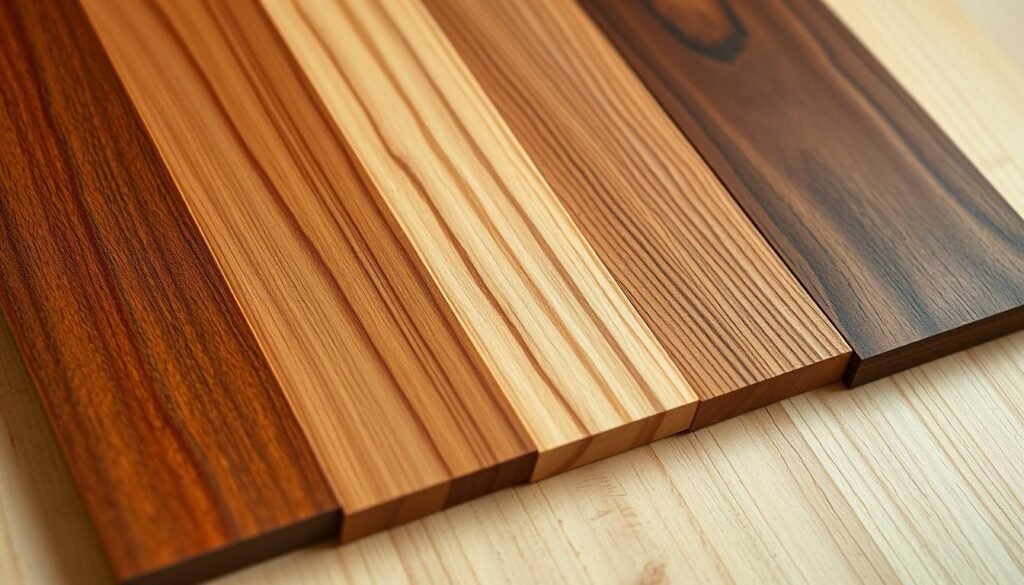
Ultraviolet (UV) light can damage wood finishes over time. Using UV-resistant finishes or a UV-blocking topcoat helps protect the wood and keep it looking good.
Humidity and Temperature Fluctuations
Changes in humidity and temperature can make wood expand and contract. This can cause finish cracking. It’s important to choose finishes that are flexible and can handle these changes.
Knowing these factors helps woodworkers choose the best finishes. This ensures their projects stay beautiful and durable for years.
Oil-Based Polyurethane: The Workhorse of Durable Finishes
Oil-based polyurethane finish is top-notch for lasting long. It’s a favorite in woodworking for its strong protection and glossy look.
Brush vs. Wipe-On Methods
There are two ways to apply oil-based polyurethane: brush or wipe-on. Brushing gives a thicker layer, great for extra protection. Wipe-on is better for detailed work or a less visible finish.
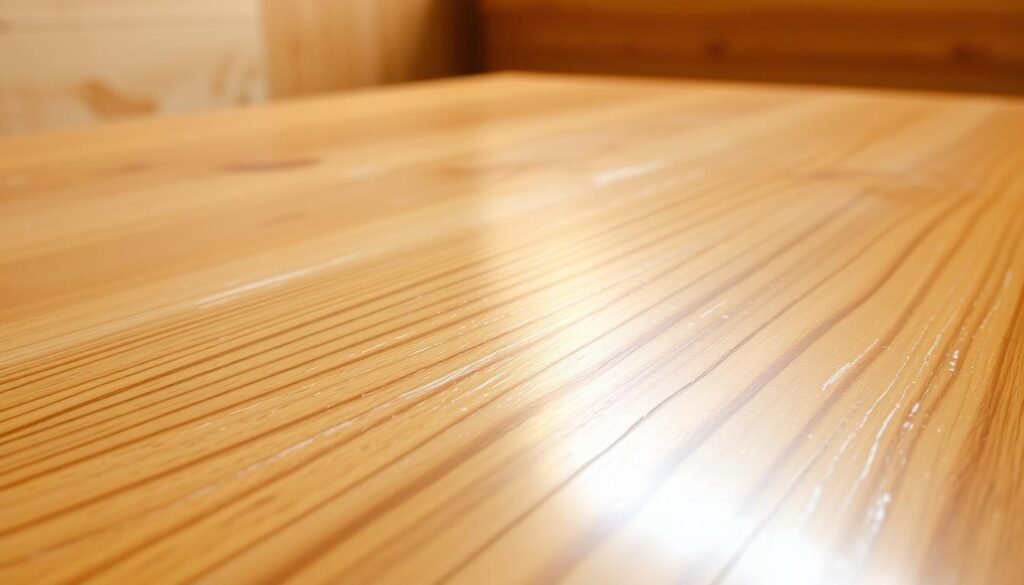
It’s important to sand between coats for a smooth finish. This step removes dust and small flaws, making the finish look professional.
Flooring and High-Traffic Surfaces
Oil-based polyurethane is perfect for floors and places with lots of foot traffic. It’s durable and resists wear and tear well.
Kitchen and Bathroom Cabinetry
In kitchens and bathrooms, oil-based polyurethane keeps wood looking good despite moisture and daily use. It protects the wood beautifully.
Water-Based Polyurethane: Eco-Friendly Durability
Water-based polyurethane is a top pick for those wanting durable, eco-friendly wood finishes. It’s a mix of traditional polyurethane’s toughness and a water-based formula’s green benefits.
Low VOC Benefits
Water-based polyurethane has low VOC (Volatile Organic Compound) emissions. This makes it perfect for indoor projects and for people sensitive to strong smells or worried about air quality.
Quick Drying Properties
It dries fast, which means projects can be finished quicker than with oil-based finishes. This is great for woodworkers who are tight on time or want to work faster.
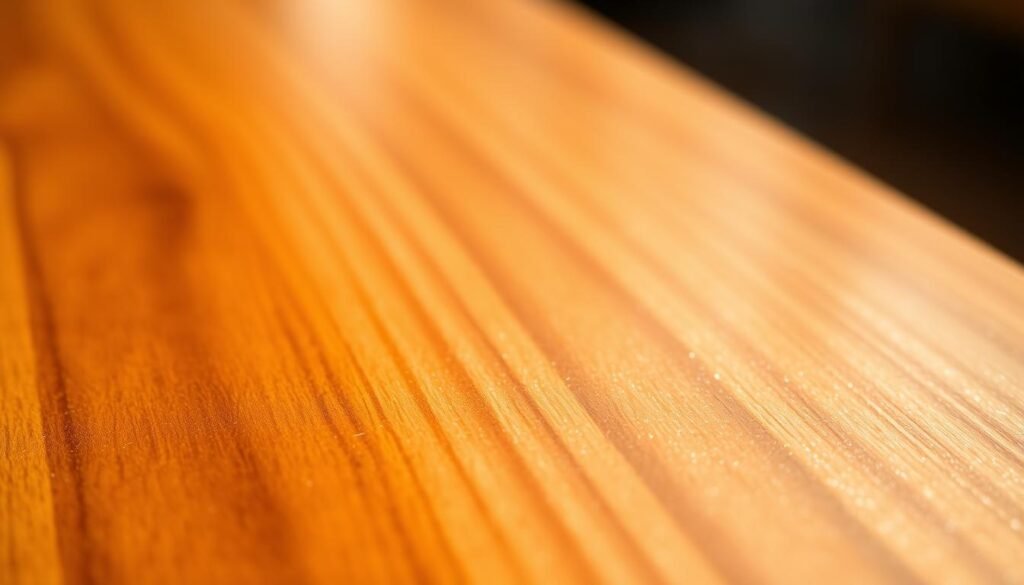
To get a smooth finish, avoid bubbles and streaks. Apply thin coats, use a good brush or applicator, and keep the area dust-free.
Building Proper Film Thickness
Getting the film thickness right is key for durability. Use multiple thin coats instead of one thick one for a strong, even finish.
Furniture and Interior Millwork
Water-based polyurethane is great for furniture making and interior millwork because it’s durable and eco-friendly. It works well for kitchen cabinets and hardwood floors.
Children’s Furniture and Toys
Its low VOC emissions and non-toxic nature make it ideal for kids’ furniture and toys. It’s safe and good for the environment.
Shellac: The Time-Tested Natural Finish
Shellac comes from the lac bug’s resin and has been used for centuries. It’s loved for its natural beauty and durability. This eco-friendly finish adds a warm glow to wood, highlighting its grain.
Different Shellac Cuts and Their Uses
Shellac has different cuts, showing how much resin is in the solution. A ‘cut’ is measured in pounds, like a 1-pound cut for the first coat. A 3-pound cut is thicker, used for later coats for a harder finish.
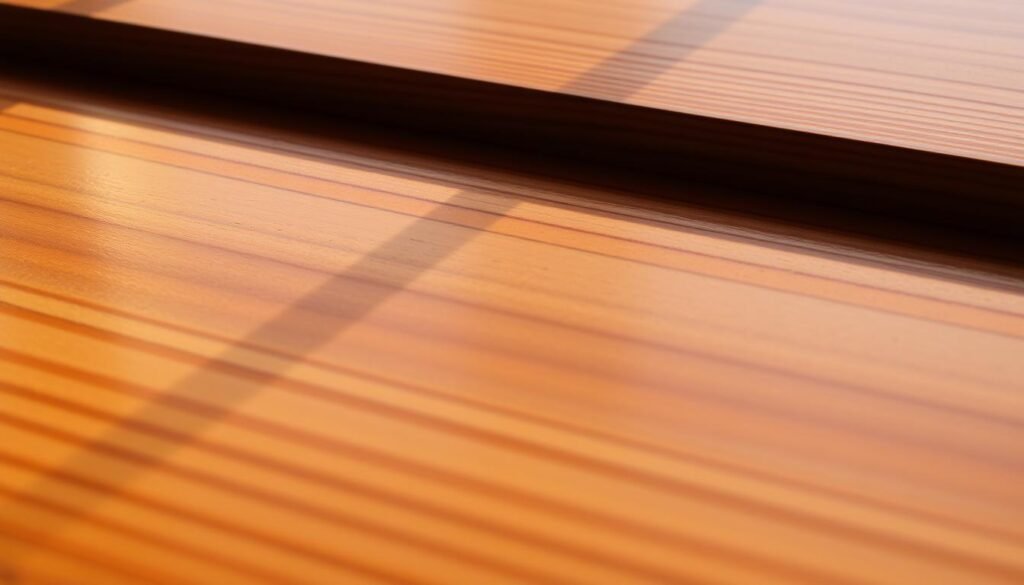
French polishing uses thin layers of shellac applied with a pad for a glossy finish. It takes patience and skill, as each layer must dry before adding the next.
Brush Application Tips
When brushing on shellac, apply thin coats and let each dry before adding more. Use a good brush and work in a clean area for a smooth finish.
Repair and Restoration Techniques
Shellac is easy to repair. Damaged spots can be fixed with more shellac coats. It’s perfect for items that get a lot of use.
Compatibility with Other Finishes
Shellac can be paired with wax or polyurethane for extra protection or shine. But, always test it first to make sure they work well together.
Shellac is a favorite among woodworkers for its natural origins, easy use, and stunning finish. It’s a great choice for any woodworking project, whether you’re experienced or just starting out.
Lacquer: Professional-Grade Protection
Lacquer finishes are known for their durability and versatility in woodworking. They are a key part of the woodworking world. They are perfect for projects needing a shiny finish and strong protection.
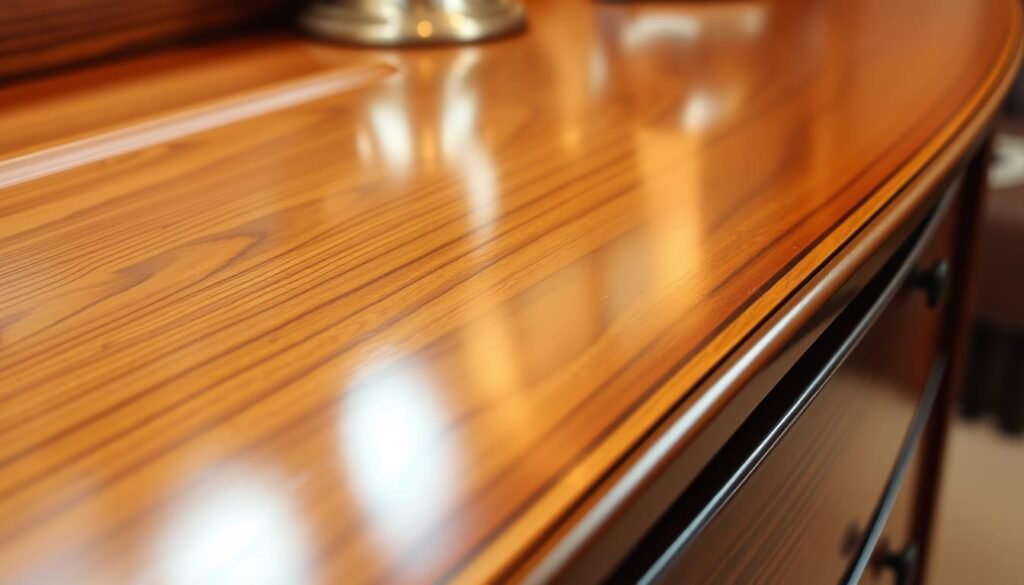
Lacquer comes in two main types: nitrocellulose and catalyzed. Nitrocellulose lacquers are easy to apply and fix. They dry fast, creating a strong finish. Catalyzed lacquers are even more durable and good for places with lots of people and for business use.
Water-Based Alternatives
For those worried about the environment, there are water-based lacquers. They are better for the planet but need careful application. They might need more coats to look right.
Equipment Requirements
To apply lacquer well, you need special tools like a spray gun and a place with good air flow. The spray gun’s quality matters a lot. HVLP guns work best for lacquer.
Environmental Considerations
Lacquer, like nitrocellulose, gives off harmful fumes when used. It’s important to work in a place with lots of air and wear a mask. Water-based lacquers are better for the air.
Fine Furniture and Musical Instruments
Lacquer is great for making fine furniture and musical instruments. It makes the wood look better and lasts long. Many makers of stringed instruments like lacquer for its sound and look.
Decorative Boxes and Small Items
Lacquer is also good for small projects like decorative boxes and detailed items. It dries fast, which is good for making things quickly. This makes it great for making lots of items.
Danish Oil: Enhancing Natural Beauty
Danish oil makes wood look better without making it less durable. It’s a favorite among woodworkers. They love how it brings out the wood’s grain and texture.
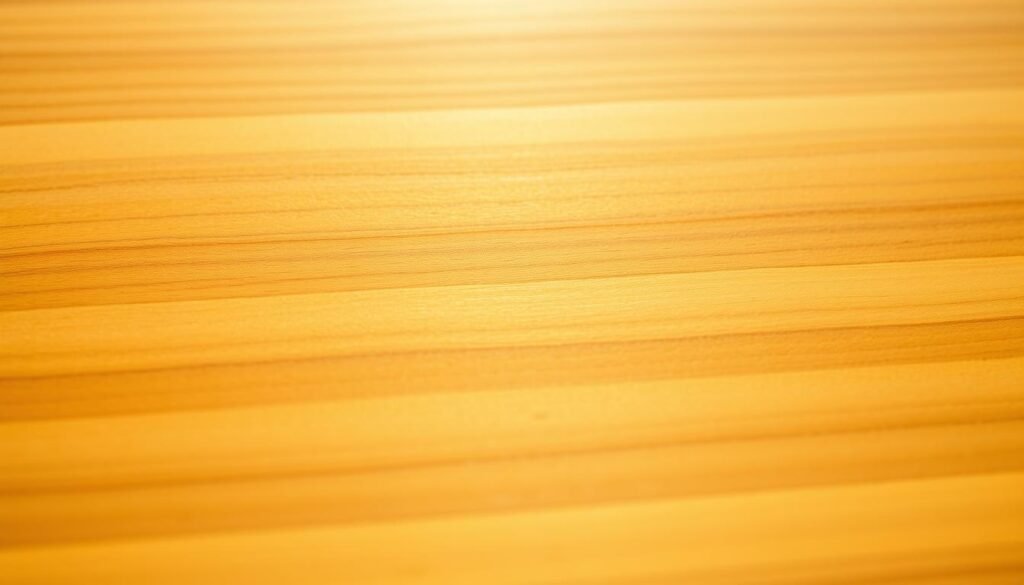
Danish oil mixes oil and varnish for a special finish. It protects wood well and makes it look great. This finish is tough and keeps wood looking natural.
Wet Sanding Techniques
Wet sanding is key to a smooth Danish oil finish. Sanding the wood while it’s wet helps. It makes the finish even and hides scratches.
Building a Satin Sheen
Danish oil creates a beautiful satin sheen. Applying thin coats and letting them dry makes the wood shine. This shows off the wood’s natural beauty.
Refreshing Worn Surfaces
Danish oil can also make old wood look new again. A new coat brings back the sheen and protects the wood. It keeps it looking good for longer.
Spot Repairs and Touch-ups
Danish oil is great for fixing small damage too. It lets woodworkers fix specific spots. This keeps the project looking good all over.
Tung Oil: The Pure Natural Option
Tung oil is known for its durability and beauty. It’s a natural choice that makes wood look great and protects it.
Drying Time Considerations
Tung oil takes days to a week to dry, depending on the environment. It’s important to wait long enough between coats for the best finish.
Water and Heat Resistance
Tung oil is great because it resists water and heat. It creates a hard finish that can handle some moisture and heat. This makes it perfect for many woodworking tasks.
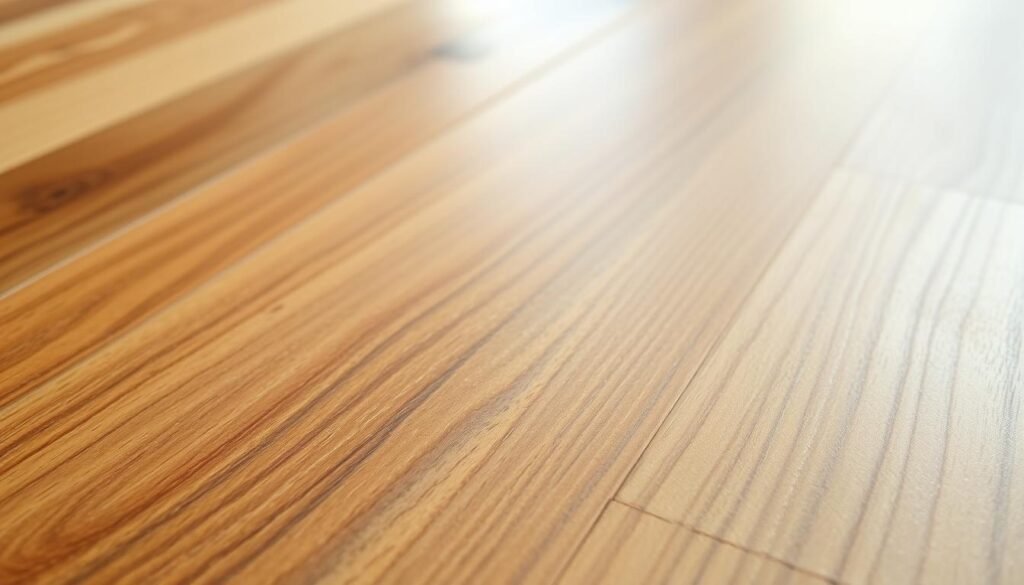
To get better results, thin tung oil with a solvent for dense woods. This method helps the oil soak in evenly and deeply.
Building a Protective Film
Using multiple coats of tung oil builds a strong protective layer. Let each coat dry before adding the next. This improves the wood’s look and protection.
Enhancing Figured Woods
Tung oil is amazing for figured woods. It highlights the wood’s grain and beauty. It’s perfect for showing off unique wood patterns.
Food-Safe Applications
Tung oil is safe for food, making it great for kitchen items. It’s non-toxic, ensuring a safe and healthy finish for things like cutting boards and utensils.
In summary, tung oil is a versatile and natural finish for wood. It’s durable, looks great, and is safe. It’s a top choice for many woodworking projects.
Woodworking Finishes That Last a Lifetime: Varnish Options
Varnish is a top choice for woodworking finishes because it’s protective and versatile. It’s a clear coating for both indoor and outdoor wood projects. It gives a hard, protective finish.
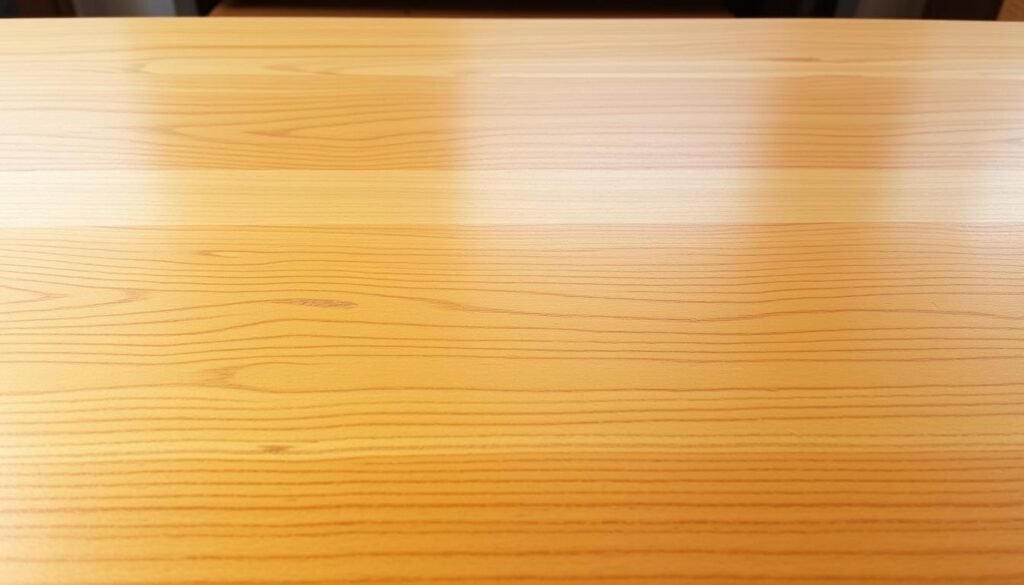
Modern varnishes have UV inhibitors and additives. These protect the wood from sunlight damage. They prevent fading and discoloration over time.
Application for Outdoor Furniture
Varnish is great for outdoor furniture because it’s water-resistant. It creates a barrier against rain and moisture. This keeps the furniture in good shape.
Flexibility and Weather Resistance
A good varnish should be flexible and weather-resistant. It expands and contracts with the wood as the weather changes. This prevents cracking and peeling.
Maintenance Requirements
Even though varnish is durable, it needs some maintenance. Regular cleaning and occasional reapplication can extend its life.
Oil-Based vs. Alkyd Formulations
Varnishes come in oil-based and alkyd formulations. Oil-based varnishes are durable, while alkyd varnishes dry faster.
Building a Mirror-Like Finish
To get a mirror-like finish with varnish, apply it carefully and use multiple coats. Sanding between coats is key for a smooth, glossy finish.
Epoxy: Modern Solution for Extreme Durability
Epoxy is a modern choice for projects needing extreme durability. It offers robust performance and long-lasting protection.
Casting vs. Coating Types
Epoxy can be used as a casting resin or a coating. Casting means pouring epoxy into a mold to make a solid object. Coating involves applying epoxy on a surface. Knowing the difference helps choose the right method.
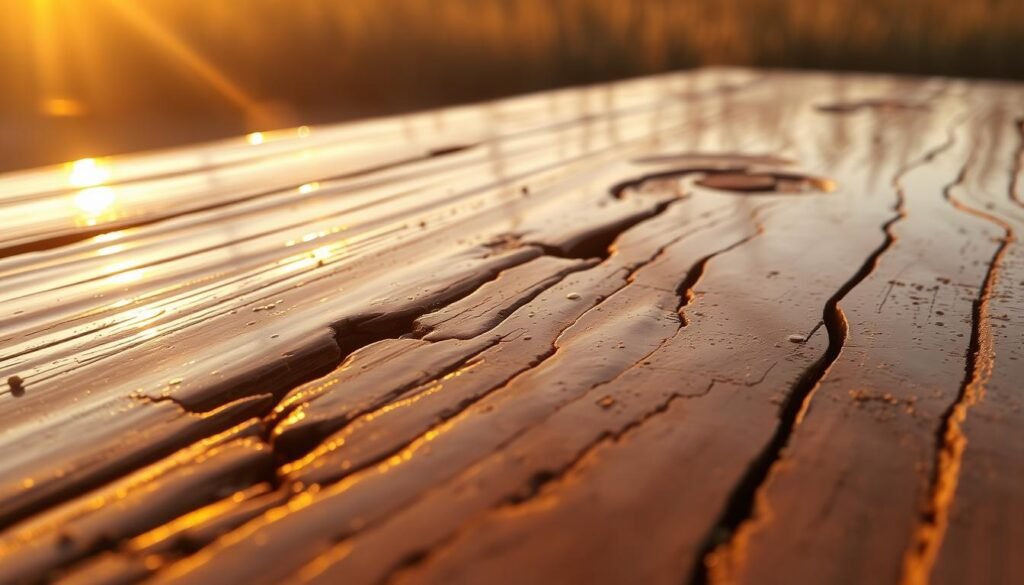
The working time of epoxy is how long it stays liquid after mixing. Cure rates show how fast it hardens. Both are key for a successful epoxy application.
Bubble Prevention Methods
Bubbles can ruin an epoxy finish. To avoid them, mix slowly, use a torch, or apply in a vacuum chamber.
Temperature Control During Curing
Temperature greatly affects epoxy curing. Keeping the temperature right ensures a strong finish.
Topcoating for UV Protection
Epoxy can break down from UV light. A UV-resistant topcoat protects it, keeping the finish looking good and lasting longer.
Creating Hybrid Finishing Systems
Mixing epoxy with other finishes creates hybrid systems. This lets you tailor solutions to your project’s needs.
Traditional Wax Finishes: Simple Yet Effective
Traditional wax is a top choice for wood finishes. It’s simple and works well. It adds a protective layer that makes wood look better.
Beeswax and Carnauba Blends
Beeswax and carnauba wax are favorites for wax finishes. Beeswax gives wood a natural glow. Carnauba wax makes it last longer. Together, they create a strong, easy-to-care-for finish.
Specialty Colored Waxes
Specialty colored waxes let you change the look of your wood. They can make wood look new or add a special color. They’re great for fixing old furniture or creating a certain look.
Hand vs. Machine Buffing
How you buff wax affects the finish. Hand buffing lets you control the wax better. Machine buffing covers more area faster. Choose based on your project.
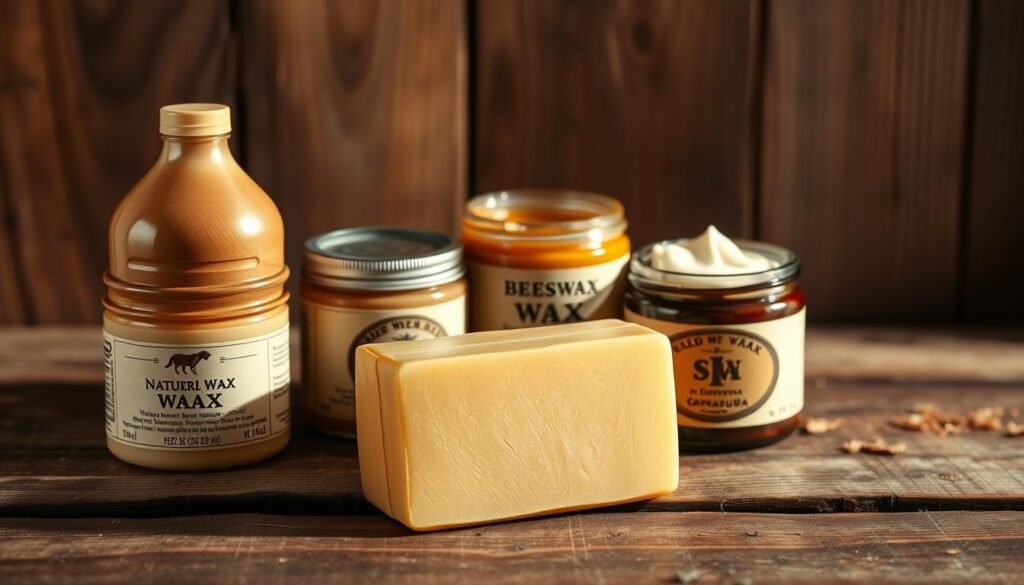
Building up wax in thin layers is key. It makes the finish smooth and strong. This way, the wax builds up without covering the wood too much.
Refreshing Worn Surfaces
Wax finishes are easy to refresh. Reapplying wax to worn spots brings back the shine. It makes the finish last longer.
Combining with Oil Finishes
Wax and oil finishes work well together. Oil goes into the wood, and wax protects the surface. This mix gives a rich, lasting finish.
Hybrid and Specialty Finishes for Specific Applications
Hybrid and specialty finishes give woodworkers more choices. They help achieve specific looks and durability. These finishes are perfect for various projects, like making furniture or musical instruments.
Commercial Products vs. DIY Formulations
Woodworkers often choose between commercial and DIY finishes. Commercial products are reliable and consistent. They come with support from the manufacturer.
DIY finishes let you customize and can save money. They’re great for hobbyists or those with unique needs.
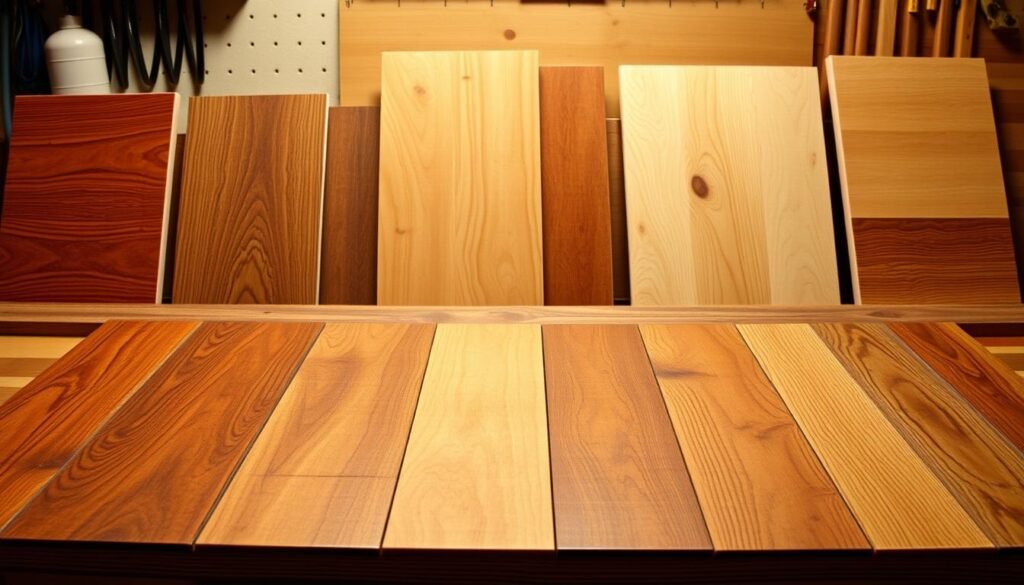
Choosing the right application technique is important. Techniques for these finishes can be different from traditional ones. You need to know how to prepare, apply, and dry them correctly.
European Formulations and Benefits
European hybrid and specialty finishes are known for quality and being eco-friendly. They often use natural ingredients and methods that are good for the environment.
Eco-Friendly Attributes
Many modern finishes focus on being eco-friendly. They use sustainable ingredients and have low VOC emissions. This makes them better for the environment.
Shou Sugi Ban (Charred Wood)
Shou Sugi Ban is a unique finish that chars the wood. It makes the wood durable and resistant to insects. This Japanese technique is loved for its beauty and performance.
Urushi Lacquer Applications
Urushi lacquer comes from the Urushi tree sap. It’s known for its durability and glossy look. It’s applied in thin layers, needing a controlled environment to dry.
Urushi lacquer is valued for its beauty. It’s used in high-end furniture and decorative arts.
In conclusion, hybrid and specialty finishes offer many options for woodworkers. They can improve durability, look, or environmental impact. Knowing the different types and how to use them helps woodworkers enhance their projects.
Conclusion: Choosing the Right Lifetime Finish for Your Projects
Choosing the right finish for your woodworking projects can be tough. There are so many options out there. Knowing what each finish offers helps you pick the best one for your project.
Think about the project’s use, the wood type, and the look and durability you want. For example, oil-based polyurethane is great for busy areas. Water-based polyurethane is better if you care about the environment.
A lifetime finish means your project will look good for a long time. Pick a finish that matches the color and shine you want. It should also highlight the wood’s natural beauty.
Learning about different durable finishes helps you choose the right one for your project. Whether it’s furniture or a decorative item, the right finish will keep it looking great for years.

